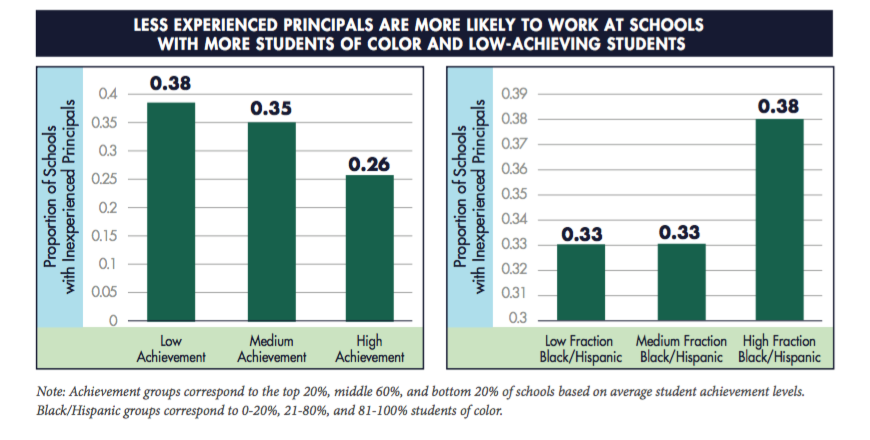
One of the worst problems in education is that we never let bad ideas die.
There’s always some know-nothing hack from another field who pokes his nose into the profession and makes pronouncements like he’s an expert.
And since he’s so successful at X (usually something in technology or business) we take these pronouncements like they’re holy writ.
This is why we never get rid of standardized testing, charter schools, evaluating teachers on student test scores, and a hundred other practices that have demonstrably failed over-and-over again.
However, perhaps the most annoying of these zombie practices is the demand for teachers to post their learning objectives prominently in the classroom.
This is beyond stupid and a waste of time.
Now don’t get me wrong.
I’m not saying teachers should go into the classroom with no idea of what they hope their students will learn everyday.
But the idea that we have so much control over our students that we can tell them with pinpoint accuracy exactly what knowledge and/or skills will be implanted in their skulls on any given day is so reductively stupid as to be laughable.
Anyone who still thinks teachers can post A on the wall and A is what will be accomplished has no business in the teaching profession.
Because, Brother, you don’t understand how teaching works!
So let’s begin with the reasons why this idea is still attractive.
First, we want to let students know what they’ll be experiencing in class on a day-by-day basis.
It’s a reasonable request to a degree. How many times have students walked into the classroom and the first thing that comes out of their mouths are, “What are we doing today?”
However, experienced classroom teachers know that this isn’t the real question. Most of the time when a student asks this they aren’t interested in what we are doing. They’re interested in what we AREN’T doing.
They want to know if we’re writing an essay, or if we’re reading a text or something that they specifically don’t feel like doing that day.
I hear this question most often in my last period classes because the students are exhausted from a full day of academics. They want to know if I’m going to tire them further or if there might be a chance at a breather here and there.
The second reason this practice is attractive is for principals.
Today’s principal is a frightening thing. After decades of educational malpractice at colleges and universities in creating new school administrators, principals no longer understand what their job truly is.
They think it’s to be a toady to the Superintendent or higher level administrators. They think they have to demonstrate their performance to their bosses with whatever data is available at every turn. (This is also what they expect teachers to do for them.)
This is why they tend to turn everything into something less important but quantifiable.
So demanding teachers to post learning objectives in their classrooms every day is something concrete and tangible that can be checked on and checked off on a clipboard. They can say to their bosses, “Look at what a good principal I am! My teachers post their learning objectives everyday!”
When I think of how principals used to manage their buildings and create an environment conducive for learning – for teachers to best impact their students – it makes me want to cry.
I miss real principals.
In any case, we can see why this demand is attractive.
However, it’s also really, really dumb.
Here’s why.
First, you have to understand how teaching works.
It’s not behavioralism. It’s not the 1920s anymore.
Students will be able to… WRONG! Students will have the OPPORTUNITY to, they will be ENCOURAGED to, their ENVIRONMENT will be altered to make it most conducive to…
You can’t rob them of agency. And if you think you can, you’re a fool.
No teacher – no matter how skilled or experienced – acts on her students like Gandalf or Dumbledore. Teaching is not magic and students are not passive objects.
You can’t say “Learn how to use nouns!” And WOOSH students can distinguish nouns from pronouns with pinpoint accuracy. You can’t put hands on a student’s head and say “Reading Comprehension!” And suddenly they pick up a book and start reading Shakespeare with absolute fidelity.
Yes, you can post these things on the wall. But what good does it do?
Students may see it and think to themselves, “So that’s what the teacher is trying to get me to know!” But how does that help?
When I took piano lessons, my teacher never told me the lesson was on the chromatic scale. She just gave me a few pieces to practice and helped me over the parts where I was stumbling.
Moreover, even if she had told me that, it wouldn’t have meant anything to me. Because I didn’t know what the chromatic scale was!
So much of education is skill based. We learn HOW to do something. We don’t spend much time on WHAT it is or any theories of how it all comes together. And even if we did, that would come at the end, not the beginning.
This is one of the major reasons why I resent the very notion of posting my learning objectives in the classroom. It ruins the surprise!
Teaching is an art at least as much as it is a science. We aren’t programing our kids like you would a computer.
When I teach my students how to write a single paragraph essay, for example, I have them write three drafts – a prewriting, a first draft (heavily scaffolded with a planner) and a final copy.
They often complain that this is a lot of writing and want to know why I’m making them do all this when they feel they could probably skip one or two steps and still come to almost as good of a final project.
I ask them to trust me. I tell them this is the best way, and that they’ll understand later. And since I’ve spent so much time creating a relationship of give-and-take, of trust, they often just get on with the work.
What I’m really doing with all these drafts is getting the format of the single paragraph essay embedded in their minds. They’re memorizing it without even knowing it.
Moreover, writing multiple drafts is good practice when you get to more complicated and longer essays. It forces you to re-evaluate what you wrote previously and it encourages you to improve it before you are finished.
Finally, it instills a process into your mind. You start to feel like this is the right way to do something and you resist taking the easier road because the way you were taught has lead to success in the past (and it will probably serve you well in the future as things get more complex).
Do you really think I should stop and explain all that to my students before we begin? Do you think it would help?
Absolutely not! Children (like tech entrepreneurs and business tycoons) often think they know everything when they really know nothing. If you explain everything to them at the beginning, they can get contrary and refuse to do all you ask to demonstrate they know better. This often leads to dead ends and reteaching – if possible.
These are things teachers like me have learned after decades in the classroom. So when a new administrator starts spouting the shallow dictums they were taught in a corporate dominated college course, it’s beyond frustrating.
Education is the one field where experience is considered a detriment. Classroom teachers are all fools. We must control educators top down with administrators full of ideology and little to no actual practical knowledge.
Teachers have far too much to do already without kowtowing to a worthless mandate to post their learning objectives in the classroom.
That, along with writing formal lesson plans, endless faculty meetings and thrown together professional development, compound to make a teacher’s workload unmanageable.
Maybe it might help encourage some of them to stay in the profession?
Maybe that might actually help student learning?
Huh? Maybe?
Like this post? You might want to consider becoming a Patreon subscriber. This helps me continue to keep the blog going and get on with this difficult and challenging work.
Plus you get subscriber only extras!
Just CLICK HERE.

I’ve also written a book, “Gadfly on the Wall: A Public School Teacher Speaks Out on Racism and Reform,” now available from Garn Press. Ten percent of the proceeds go to the Badass Teachers Association. Check it out!
















